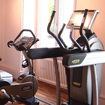Teaching Practice 8
Elementary Level level
Description
Materials
Main Aims
-
• To provide the students with the ability to give advice and suggestions in their daily lives, using "should", "shouldn't", "why don't you?" or "how about?". The context is mind and body, so the students will learn this target language in that context.
Subsidiary Aims
-
• To provide the students with the opportunity to intermingle and interact with each other, using the target language.
Procedure (48-66 minutes)
Warmer/Lead-in To set lesson context and engage students First, I will refer to the lesson before mine, which focuses on reading a piece called: "Top Tips for a Healthy Heart". I will ask them to give me a few tips about what we "should" do to stay healthy and what we "should" avoid. After this quick chat, I will move on to my next stage. Teacher-whole class 3 – 5
One of my subsidiary aims is vocabulary. So i need to elicit the necessary vocab. before the exposure stage. I will elicit "advice", "sympathy" "tip", "stomach ache", "headache", "sore throat" and "terrible". I will make use of some images while eliciting the illnesses. In fact I will link the warm-in part with the eliciting vocab. part. (While the students give me answers about the reading text of the
The students will be given the text of two conversations (fill-in-the blanks) and two images. First they have to match the the dialogues with images A and B. And afterwards, they will fill in the blanks with correct words. They will work alone and then check with their peers. We will do a whole class feedback afterwards.
In this stage, I need to clarify the meaning of the target language. Here I am ataking the Guided Discovery Approach, to make the students comprehend the function of the target language. The students will be asked to put the sentences written in bold letters (in the exposure texts) in three categories. In the exposure text, there are five sentences written in bold. One of them is to ask for someone' health, one shows sympathy, and one is used for giving advice. The students will work alone, check with peers, and afterwards we will do a whole class feedback. Here I have to do some meaningful CCQs to check comprehension. They should especially understand the part about giving advice. They should comprehend that "Why don't you go home?" is not a question to satisfy curiosity., but an advice. Here I can ask: "does he ask that because he's curious?" "Is that a question or an advice?".
The students will be given a text with five sentences but the verbs will be blank. eg: "How about...... (drink/drinking) some herbal tea?" The students will refer to the text to find the correct form of the verb. They will work alone and then check with their peers. During the whole class feedback, I will make sure they understand when the verb should take an -ing form.
I will write four sentences on the board. One with "should", one with "shouldn't", one with "how about?" and one with "why don't you?" We will drill each of the sentences from the end to the beginning.
The students will be given four sentences and they have to fill in the blanks with "should", "shouldn't" "how about?" and "why don't you?" They will work alone, check with their peers and later we will do a whole class feedback.
The students will be paired up, half of the pairs will have an illness, and the other will be doctors. They will first pick an illness and think about how to express their complaints. Afterwards the students will stand up and intermingle with each other, the doctors will give advice using the target language.
The teacher will monitör and listen to the students closely while they are busy doing the free practice. The teacher will take note of their errors and correct them afterwards on the board.

